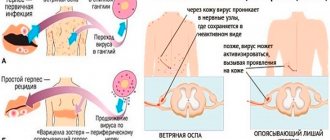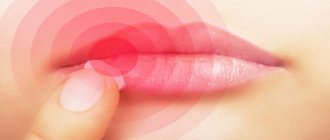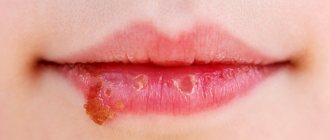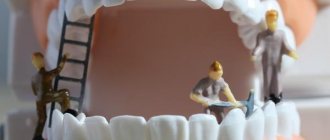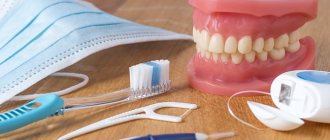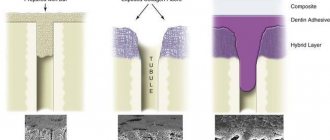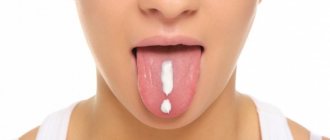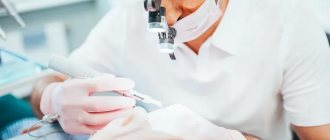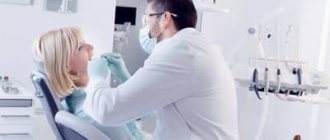Leukoplakia of the oral cavity: causes of the disease
The reasons causing the development of the disease include:
- Smoking. When using tobacco, the oral cavity is exposed to various irritants, including thermal (incoming smoke has a temperature of about 60 degrees Celsius) and chemical (nicotine, tar and combustion products). No less dangerous is chewing tobacco, which is also a provoking factor.
- Eating either very hot or very cold food on a regular basis for a long time.
- Mechanical trauma (bad bite, sharp edges of teeth, orthopedic structures installed with violations).
- Metal seals that cause galvanic currents.
- Inhalation of vapors of gasoline, benzene, varnishes and paints, as well as other resins.
- Hormonal imbalance, constant stress and lack of retinol.
Diagnosis of the disease
Diagnosis of leukoplakia is carried out by a dentist. To make an accurate diagnosis, it is necessary to use laboratory and instrumental studies. The most important stage of diagnosis is a biopsy of the lesion and subsequent histological analysis.
It is very important to conduct a laboratory diagnosis of HIV, and also to exclude diseases such as oral candidiasis, condyloma, hypertrophy of the oral papillae, genital warts and mucosal keratosis before making a diagnosis of hairy leukoplakia.
Symptoms
The first signs of the disease often go unnoticed because they do not cause any pain or discomfort in the patient. Nevertheless, a specialist will be able to determine the onset of leukoplakia by the appearance of the mucous membrane, lips and the area where the teeth meet.
The first sign of the disease is the appearance of a keratinized gray area, which can appear on the palate (in smokers), in the corners of the mouth, on the inside of the cheek, etc. An easily removable white plaque forms in this area, but after a few days the formation makes itself felt again . The patient may feel tightness in the mouth, but, as practice shows, most people simply do not pay attention to this.
Plaques with a diameter of no more than 4 centimeters are formed. They may appear:
- on the inner surface of the cheeks;
- on the tongue (on the back or sides);
- in the sky;
- on the gums;
- in the corners of the mouth.
The process of plaque formation takes up to one month. At the first stage, the area of the future formation seems slightly swollen; when you feel it with your fingers, the compaction is not felt. However, over time, another symptom of oral leukoplakia appears - the mucous membrane at the site of the swelling loses its original shine and becomes rough, which is noticeable when touched.
There is no pain in this case: only sometimes a feeling of dryness at the site of the outbreak is possible.
Gradually, the color of the spots changes from gray to bright white. The spots in most cases have clear boundaries. Their increase is possible when the disease enters its second stage, called verrucous.
The disease often causes candidiasis and malignant cancers. In an advanced state, leukoplakia is very difficult to treat: the affected areas become even more keratinized, ulcers can form, and the infection gradually spreads to other areas of the mouth.
Causes
The direct cause of hairy leukoplakia is the Epstein-Barr virus - human herpes virus type 4. In the literature it is also referred to as the Epstein-Barr virus.
This is a DNA-containing virus that does not have an RNA stage and is capable of influencing processes that ultimately lead to the formation of tumors (in particular, malignant ones).
note
It is believed that the Epstein-Barr virus, which provokes the development of hairy leukoplakia, is infected with 80-85% of the planet's population - and these may be representatives of fairly prosperous communities who undergo timely preventive examination and treatment, and maintain a healthy lifestyle. But in the majority of the population, the virus does not cause the development of any symptoms, and therefore does not force the patient to see a doctor - as a result, it is not detected.
The pathogen was named after the scientists who described it - British virologist Michael Epstein (Epstein) and his assistant Yvonne Barr. The name Epstein-Barr virus, which is sometimes found in the literature, is incorrect.
Most often, the development of immunodeficiency, which provokes the activation of the Epstein-Barr virus, is provoked by factors such as:
- AIDS virus;
- blood disorders - in particular, tumor ones;
- use of drugs that suppress the immune system;
- smoking;
- injury to the oral mucosa.
The mere presence of the human immunodeficiency virus is not the cause of the development of hairy leukoplakia - it appears in a person when he has developed AIDS (acquired immunodeficiency syndrome).
Of the tumor blood diseases, acute leukemia plays a role in the activation of the Epstein-Barr virus and the development of hairy leukoplakia - a malignant pathology that involves the occurrence of blood stem cell mutations in the bone marrow, as a result of which blast cells do not transform into mature blood cells.
Immunosuppressants (drugs that suppress the immune system) are used to intentionally suppress the immune system. This is required in cases such as:
- preventing rejection of a transplanted organ;
- treatment of autoimmune diseases.
Of the bad habits, smoking is most often the background for the development of hairy leukoplakia. It has been noticed that heavy smokers suffer from this pathology 3-4 times more often than those who smoke from time to time. Less commonly, the formation of pathology is facilitated by the regular influence of alcohol on the oral mucosa.
From dental manipulations, the impetus for the development of the described disorder may be the installation of metal-ceramic dentures, since a low current current arises between their components.
It has been noted that hairy leukoplakia occurs more often in those patients who have had trauma to the oral mucosa. This may be traumatizing:
- mechanical;
- chemical;
- thermal.
Regular mechanical trauma to the same location is important. It can be caused by:
- teeth;
- braces;
- food.
In the first case, this is observed when:
- a person has naturally uneven teeth;
- the crowns were installed incorrectly.
Braces lead to injury to the oral mucosa if they are installed incorrectly, as well as when low-quality material is used in the manufacture of braces.
A person can injure the oral mucosa if he eats:
- food with sharp elements - for example, fish bones or fragments of animal bones can act as a traumatic agent;
- solid food, pieces of which rub the mucous membrane - usually in the area where the mucous membrane of the lips meets the teeth.
Chemical injury, which contributes to the development of hairy leukoplakia, is observed when chemicals come into contact with the mucous membrane lining the oral cavity. These can be both pronounced aggressors (acids, alkalis) and less aggressive ones, which, nevertheless, with regular exposure, irritate the oral mucosa (“spicy” culinary seasonings).
For hairy leukoplakia to occur due to chemical trauma, regular exposure to a traumatic agent is necessary. But in a number of cases, the development of foci of the described disease was noted with a single thermal effect on the mucous membrane - for example, with thermal burns.
Thermal injury is observed with periodic exposure to thermal factors on the oral mucosa. As a rule, this happens if a person, due to family traditions or personal preferences, often consumes too hot food or drinks.
In addition, general factors that can contribute to the occurrence of hairy leukoplakia have been identified. This:
- endocrine pathologies - diabetes mellitus (impaired carbohydrate metabolism due to lack of insulin), hypothyroidism (lack of thyroid hormones), hyperthyroidism (their excessive synthesis);
- intercurrent microflora (one that joins at the same time);
- dehydration (dehydration due to various diseases and pathological conditions).
Kinds
- The most common is simple or, as it is also called, flat leukoplakia . It is usually discovered by chance during an examination by a dentist, since the patient does not experience any subjective sensations. A burning sensation occurs extremely rarely, and the appearance of the mucous membrane may change. If the disease affects the tongue, loss of taste may occur.
- Hairy leukoplakia of the tongue resembles stomatitis. The shape of the spot that appears, as well as its size, can be different, the color - from pale gray to white. The surface of the mucous membrane at the site of the lesion becomes slightly rough, which can be felt to the touch. On the cheeks it appears as solid or broken lines. It can also be found on the lips, where it looks like thin paper pasted on.
- Verrucous leukoplakia is the second stage of the development of the disease. The keratinization thickens, the affected area seems to rise above the nearby tissues. When you touch it with your fingers, you feel a compaction.
- Erosive form . Untimely diagnosis of the two previous stages of the disease leads to a worsening of the situation - the person feels pain when exposed to any irritants, erosions or ulcers are visible in the mouth.
- Soft leukoplakia is a type of cancer. Its distinctive feature is peeling of tissue in the area of the lesion. To clarify the diagnosis, a histological method of studying cells is required.
- Tappeiner's leukoplakia . This form of the disease affects people who abuse smoking. According to studies, daily smoking 10 cigarettes a day increases the chance of developing the disease by 50 times (as the number of cigarettes increases, the risk also increases)
The disease begins with the formation of lesions on the roof of the mouth (sometimes they appear on the gums). The mucous membrane changes its color to a pronounced gray or bluish, which is noticeable to the naked eye, folds appear on it. Reddish nodules may begin to appear, which is accompanied by infectious inflammation of the oral cavity (caused by the accumulation of salivary gland secretions in the tissues).
Complications
Complications that may accompany hairy leukoplakia are most often:
- addition of a secondary infection;
- malignant neoplasms.
In the first case, stomatitis of various origins occurs - usually bacterial. In this case, a nonspecific infection is detected, which is quite widespread in the body - staphylococci, streptococci, E. coli and others.
In the latter case, it is most often non-Hodgkin lymphoma, a malignant tumor that forms from lymphatic tissue.
Diagnosis of oral leukoplakia
Treatment of any disease begins with diagnosis: leukoplakia is no exception in this regard.
During the examination, the doctor interviews the patient to determine the factors contributing to the development of the disease. These include regular exposure to tobacco smoke, working in hazardous conditions, recent dental surgery, etc.
Next, laboratory tests are prescribed. The following procedures can be carried out:
- tissue sampling (biopsy). Accompanied by anesthesia;
- examination of the collected material under a microscope. The method allows you to determine the presence or absence of cancer cells in the formation;
- a smear of the mucous membrane is taken;
- A Schiller test is done (the mucous membrane is stained with a solution consisting of water and iodine - foci of leukoplakia are not stained);
- blood is taken for analysis (an increase in ESR may indicate the presence of malignant neoplasms).
In addition, the doctor may additionally prescribe a urine test, conduct a biochemical blood test and request the result of fluorography. You may need to consult an oncologist (if cancer is suspected), a therapist (to rule out infectious diseases) and a dermatologist (to look for other foci of disease).
Development of pathology
The Epstein-Barr virus enters the mucosal cells and does not leave it, according to researchers, until the end of the patient’s life. The following is observed: cells of the immune system (namely lymphocytes) do not allow the virus to provoke serious changes (which will be discussed below), but they are also not able to deactivate it. In the end result, neither the body can defeat the virus, nor the virus the body - a kind of balance arises. This condition has often been observed for many years - those infected simply do not realize that they are the “hosts” of the virus, since nothing bothers them.
Periodically, when the immune system weakens under the influence of any factors (for example, in the presence of another infection), the virus is activated and begins to multiply intensively. This becomes a kind of irritant for the body, it mobilizes the immune system, and it suppresses the replication (division) of the virus.
With hairy leukoplakia, a dysplastic process is observed - a violation of the structure of tissues due to:
- excessive cell proliferation;
- their clusters.
Small multiple outgrowths are formed from the cells, which form the morphological basis of hairy leukoplakia.
In addition to quantitative ones, qualitative disorders are observed - namely, the processes of hyperkeratosis (excessive keratinization). The described disease is also called “carpet” leukoplakia, since under optical magnification the oral mucosa resembles carpet pile. But such changes can only be seen when studying the affected mucosa under a microscope. In turn, increased reproduction is observed for the reason that the virus, when multiplying, does not suppress the cells in which it has settled, but rather stimulates them.
Leukoplakia of the oral cavity: treatment with medications
Treatment involves the complete elimination of irritating factors that led to the development of the disease:
- to give up smoking;
- grinding down sharp edges of teeth;
- sanitation of the oral cavity;
- replacement of fillings;
- use of products to protect the surface of the lips.
Additionally, a course of vitamin A is prescribed, lasting at least a month, which inhibits the process of tissue keratinization.
If the measures taken do not cause complete disappearance of the manifestations of the disease, surgical intervention is allowed: the lesion is excised, depending on the degree of development of the disease, cryodestruction or electrocoagulation is used.
Ulcers deserve special attention, as they can develop into cancerous tumors. For their treatment, drugs are prescribed that enhance the process of tissue regeneration and epithelization. If there is no positive dynamics, surgical intervention cannot be avoided.
A person with leukoplakia must constantly visit the dentist for examination to prevent malignant degeneration of the cells.
In addition to quitting smoking, the patient’s diet is adjusted: during treatment, spicy and too salty foods are excluded from the diet, and it is recommended to eat more vegetables and fruits.
Drugs prescribed:
- products that restore the epithelium (the most effective was 30 percent tocopherol acetate, which is applied to damaged areas three times a day for 15 minutes, after which it is washed off with water);
- antiseptics (after each meal it is recommended to rinse your mouth with a solution of chlorhexidine at a concentration of 0.05%);
- analgesics (their use is justified in the presence of pain. Lidocaine, applied to the mucous membrane before meals, has worked well).
Under no circumstances should you use drugs that have an irritating effect, as otherwise this can lead to the formation of cancer cells.
If there is no improvement within a couple of weeks, surgery is prescribed: this can be either excision with a scalpel or the application of cold in the form of a liquid stream of nitrogen.
Reasonable restrictions for leukoplakia
For leukoplakia of the vulva, vagina and cervix, it is extremely UNADVANTABLE to take hot general baths, stay in the sun for a long time and sunbathe (regardless of the activity of the Sun, the presence/absence and type of bathing suit).
HEAT TREATMENTS and insolation (sunbathing in natural conditions and solariums) increases the production of estrogens (female sex hormones), the excess of which stimulates oncological processes.
- Reviews about the treatment of vulvar leukoplakia in our Clinic
- About the Clinic
- Clinic team
- Prevention of female diseases
- What is homeopathy?
- How to prepare for an appointment with a gynecologist?
Our specialized clinic for the treatment of leukoplakia is open 7 days a week and on holidays:
Monday - Friday from 8.00 to 20.00, Saturday, Sunday, holidays from 8.00 to 17.00.
Treatment of vulvar leukoplakia in Pyatigorsk by appointment no later than 3 days in advance by multi-channel phone number 8 (calls within Russia are free), or (for foreign calls).
| ONLINE about the treatment of leukoplakia in Pyatigorsk at BOOK ONLINE for leukoplakia treatment here. BOOK online for leukoplakia treatment here. Buy coursework for treatment by phone or here. |
Booking
Subsections
- Program No. 1. Treatment of inflammatory and infectious diseases of the pelvis
- Program No. 2. Treatment of urinary incontinence, prolapse and prolapse of the uterus and vagina
- Program No. 3. Treatment of female infertility of endocrine (hormonal) and mixed origin
- Program No. 4. Treatment of erosion, endometriosis, leukoplakia, dysplasia, polyps, cervical cysts (uterine cysts)
- Program No. 5. Treatment of uterine fibroids
- Program No. 6. Treatment of cervicitis and endocervicitis
- Program No. 7. Postpartum rehabilitation and wumbling
- Program No. 8. Treatment of chronic cystitis
- Program No. 9. Treatment of severe menopause
- Program No. 10. Treatment of mastopathy
- Program No. 11. Treatment of endometriosis
- Program No. 12. Treatment of hydrosalpinx
- Program No. 14. Comprehensive treatment of polycystic ovary syndrome
- Program No. 15. Preconception preparation for IVF, ICSI
- Program No. 16. How to remove belly fat
- Program No. 17. Treatment of kraurosis
- Program No. 18. Treatment of vulvar leukoplakia
Oral leukoplakia: how to treat it at home
In addition to drug treatment, oral leukoplakia can be treated with traditional medicine.
There are many recipes, here are just the main ones:
- rinsing with herbs (infusions of oregano, chamomile, ginseng and other adaptogens that reduce the inflammatory process and increase the body’s resistance to harmful factors are suitable);
- regular consumption of nuts and tinctures based on them;
- rinsing with decoctions of calendula, St. John's wort, eucalyptus. Alternation works well - once the oral cavity is rinsed with a soda solution, after a couple of hours - with an infusion of herbs. This procedure should be repeated at least 5 times a day;
- lubricating the lesions with sea buckthorn and olives (the fruits must first be mashed in your hands so that the juice appears).
Timely detection of the disease and compliance with all doctor’s recommendations is the key to recovery in the shortest possible time and reducing the risk of complications. If you start treatment at the initial stage, you can reduce the likelihood of complications to almost zero.
Treatment
INITIAL CONSULTATION
from RUB 2,750
Treatment of leukoplakia with signs of basal cell hyperactivity and atypia is reduced to their excision; Laser therapy has been successfully used.
For simple leukoplakia, careful observation with mandatory colposcopic control is allowed. At the same time, treatment of inflammatory processes, endocrine and other disorders is carried out. In older women with simple vulvar leukoplakia, ointments containing small amounts of estrogens are used. For leukoplakia accompanied by itching, warm sitz baths and hydrocortisone ointment are effective.
Why does it appear?
Naturally, many are interested in why this pathology manifests itself and who is more susceptible to it than others. “Hairy tongue can appear in both adults and children. In children and adolescents, it most often occurs while taking certain medications. Among adults, this problem is more common among those who smoke and abuse alcohol,” says Ilya Antonov.
The dentist identifies three main reasons for the development of this syndrome:
- Infectious diseases.
- Hypovitaminosis.
- Diseases of the gastrointestinal tract.
As noted by an otorhinolaryngologist of the highest qualification category, Ph.D. Vladimir Zaitsev , when they talk about the connection between the appearance of a hairy tongue and the gastrointestinal tract, they often mean not so much intestinal diseases as stomach diseases. For example, such a picture can occur with gastritis, notes ENT. A stomach ulcer can also have its own specific effects on the tongue, especially if we are talking about its perforated version.
Vladimir Zaitsev also says that a problem may arise for those who abuse excessive “care” for their oral cavity and nasopharynx, if a person begins to overuse drugs for therapy. “Antibiotics can have an effect this way. This problem can also develop in patients who uncontrollably take medications as part of self-medication, when a person rinses and dissolves something for a long time, it does not help him, but he continues further. Overdose and increased concentrations of such drugs can cause an unexpected local reaction in the tongue. In this way, drugs that have color (color), for example, iodine-containing, oil and alcohol solutions on herbs for gargling, can have an effect,” says Vladimir Zaitsev.
In addition, among the reasons for the development of such a problem, the ENT cites allergies, intolerance to certain drinks and certain foods. The tongue becomes an indicator that the body is reacting negatively to some factors. “For example, excessive love for sugar, yeast products in large quantities - the same kvass, beer, yeast dough can cause a change in the appearance of the tongue,” says Vladimir Zaitsev.
Breath of the desert. What are the dangers of chronic nasal dryness? More details
How to treat?
“Treatment includes several main areas - examination and determination of the level of hygiene, followed by professional cleaning with special solutions and brushes. A smear is also taken from the surface of the tongue to determine the pathological composition of plaque in the laboratory and select effective drugs,” says Ilya Antonov. He notes that such a syndrome can be false and becomes a consequence of severe systemic diseases, such as leukoplakia and Addison's disease.
Article on the topic
Taking you by the throat. It is important to understand – is sore throat viral or streptococcal?
“To exclude these diagnoses, the dentist refers the patient for additional studies. In any case, you should not hope that the situation can be dealt with using home remedies. Therefore, you should consult a doctor,” says Ilya Antonov.
Otorhinolaryngologist Zaitsev, in turn, notes that one must pay attention to the controllability or uncontrollability of the situation. “A controlled state is when it is enough to give up some foods or the same medications for the situation to gradually level out. An uncontrollable situation is when a person goes on a diet, and a strict one, but the situation does not change. In this case, it is necessary to consult a doctor and not delay,” says Vladimir Zaitsev. After all, the situation, as doctors emphasize, can be quite serious, and there is no point in wasting time, as this will directly affect the outcome of treatment.

